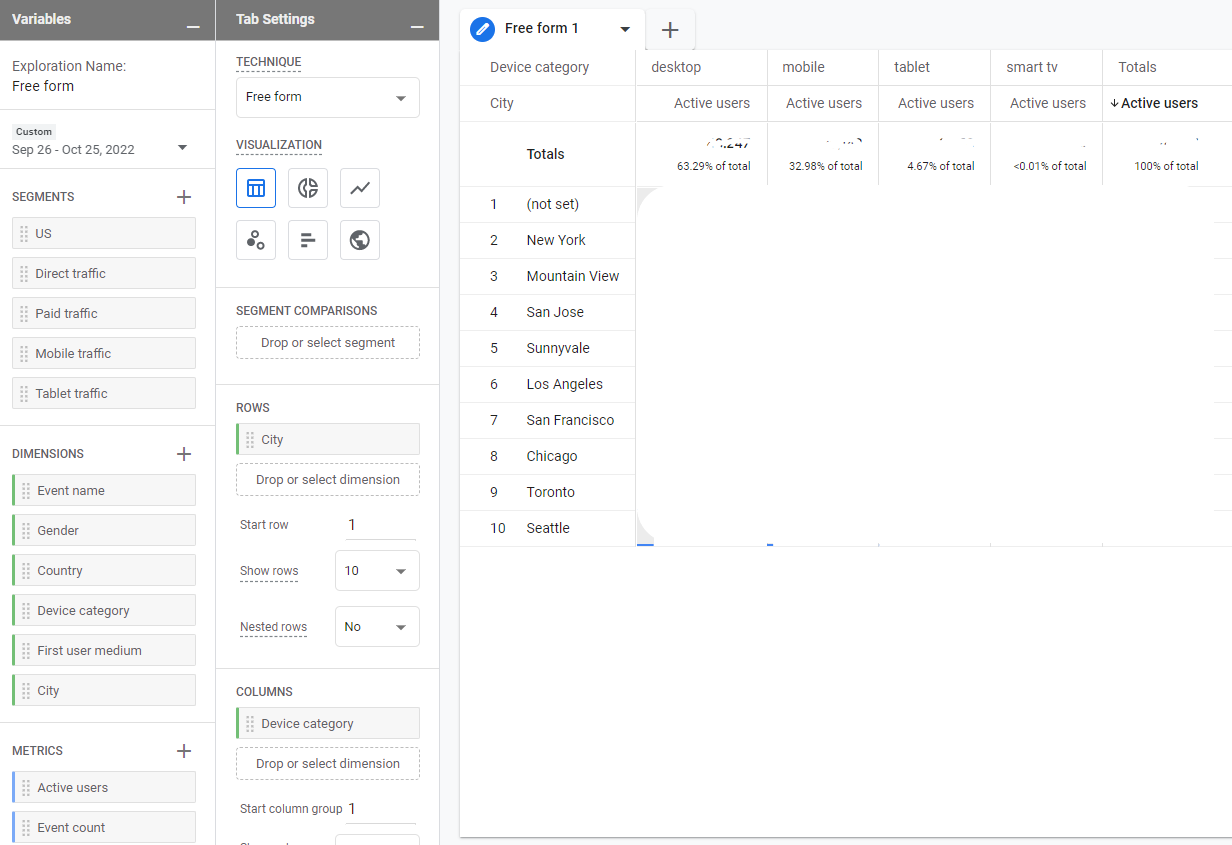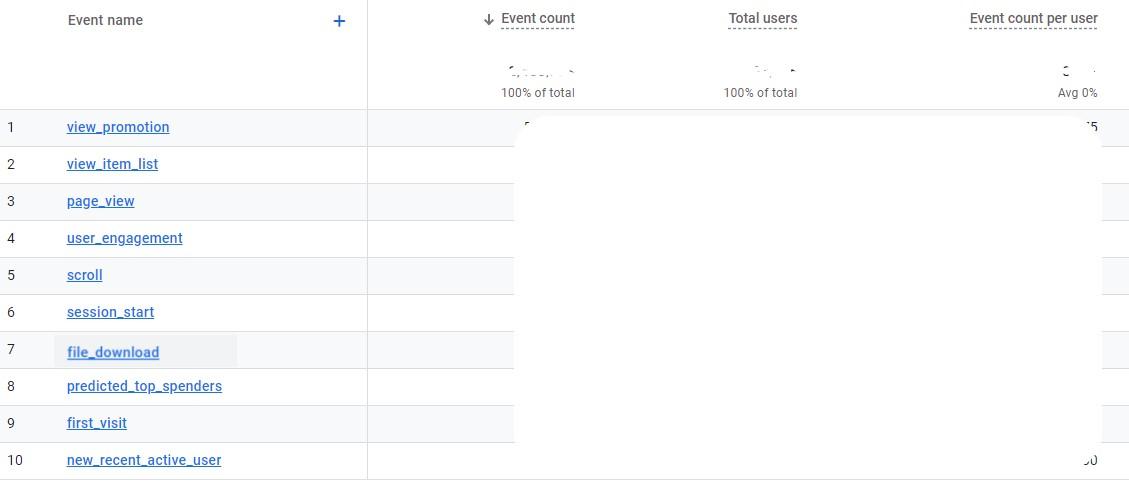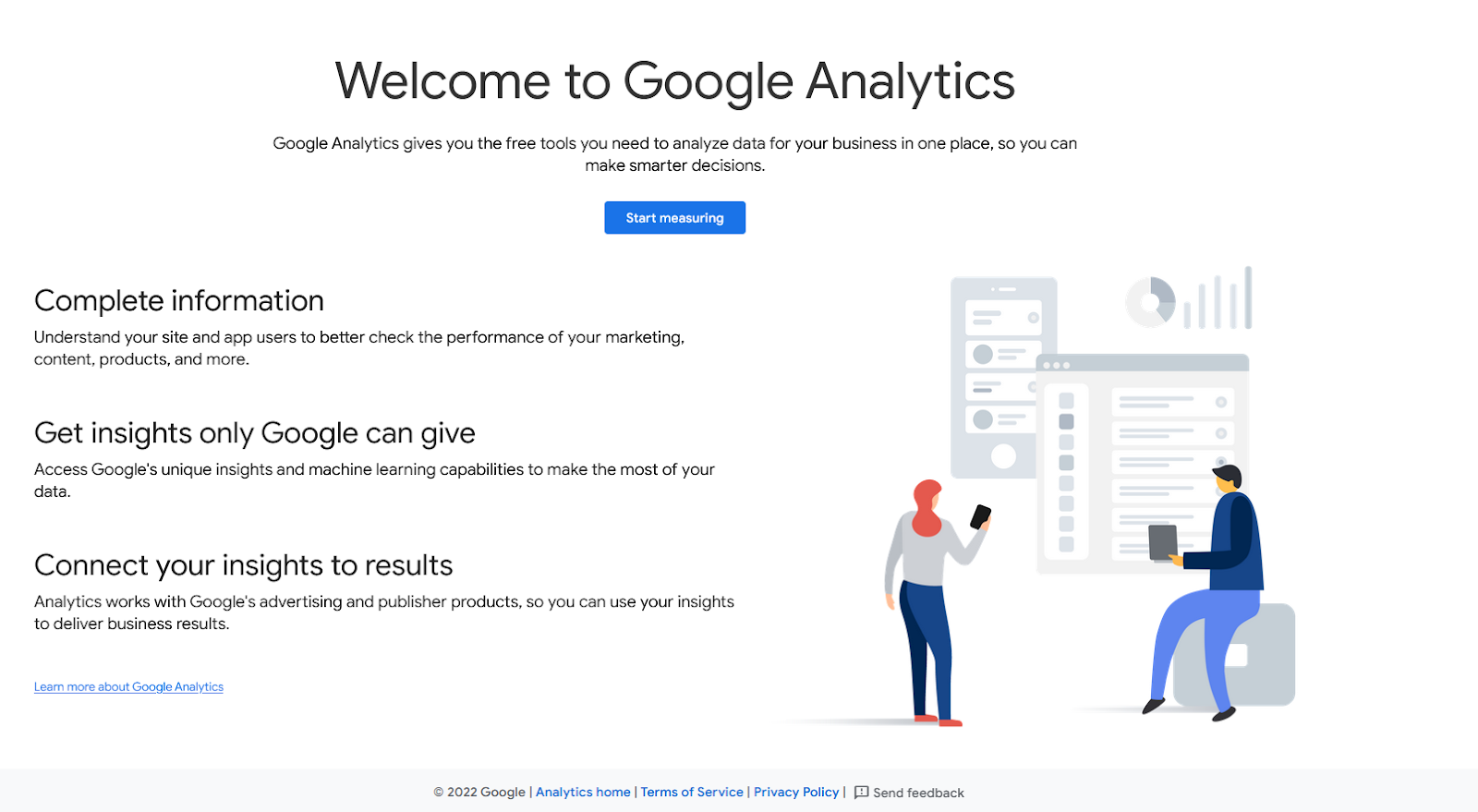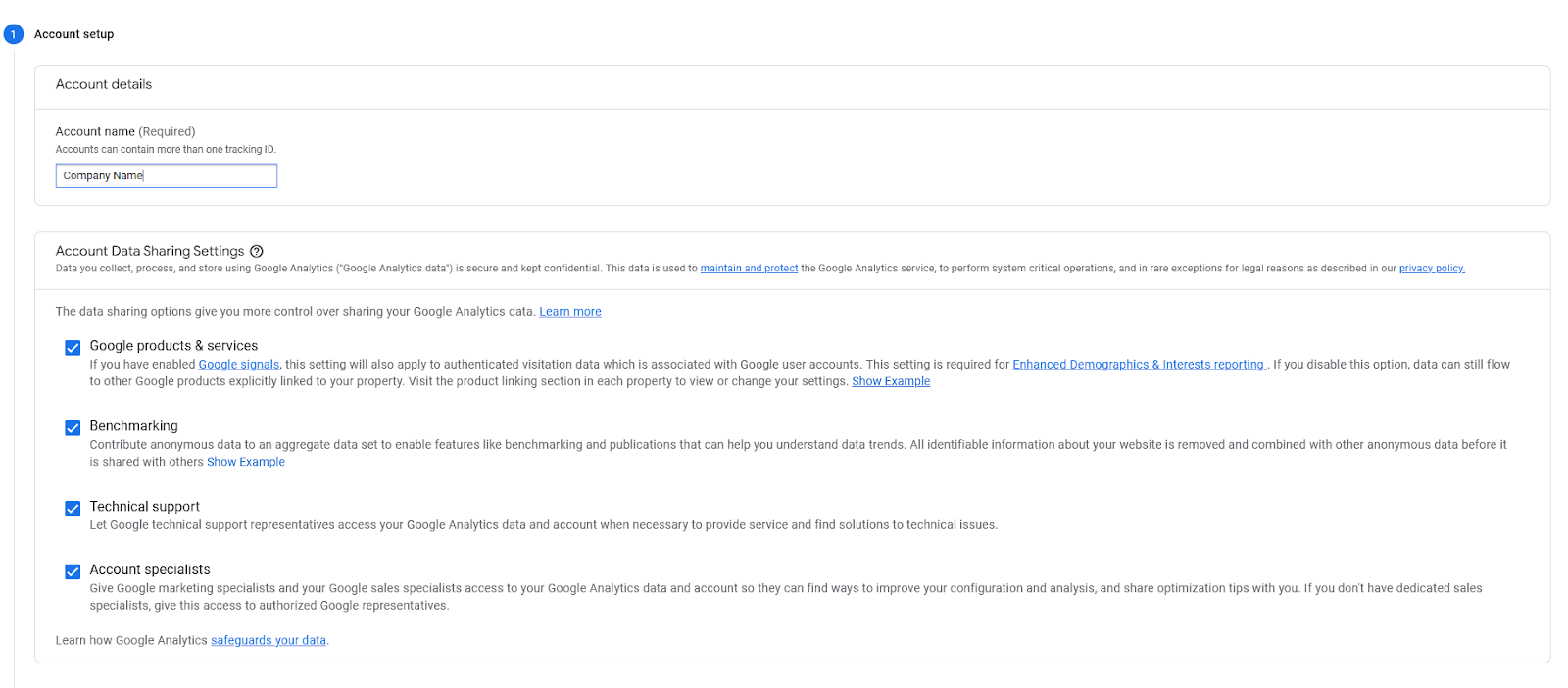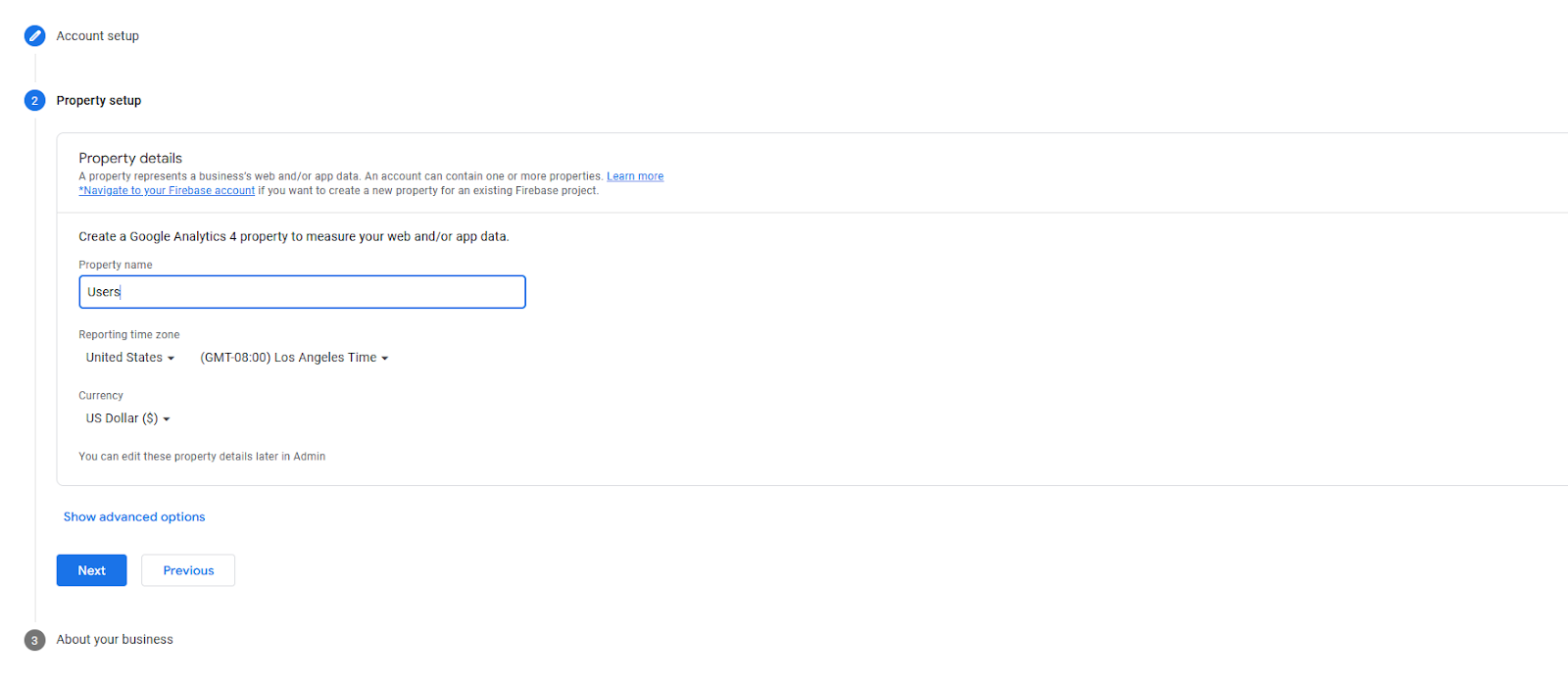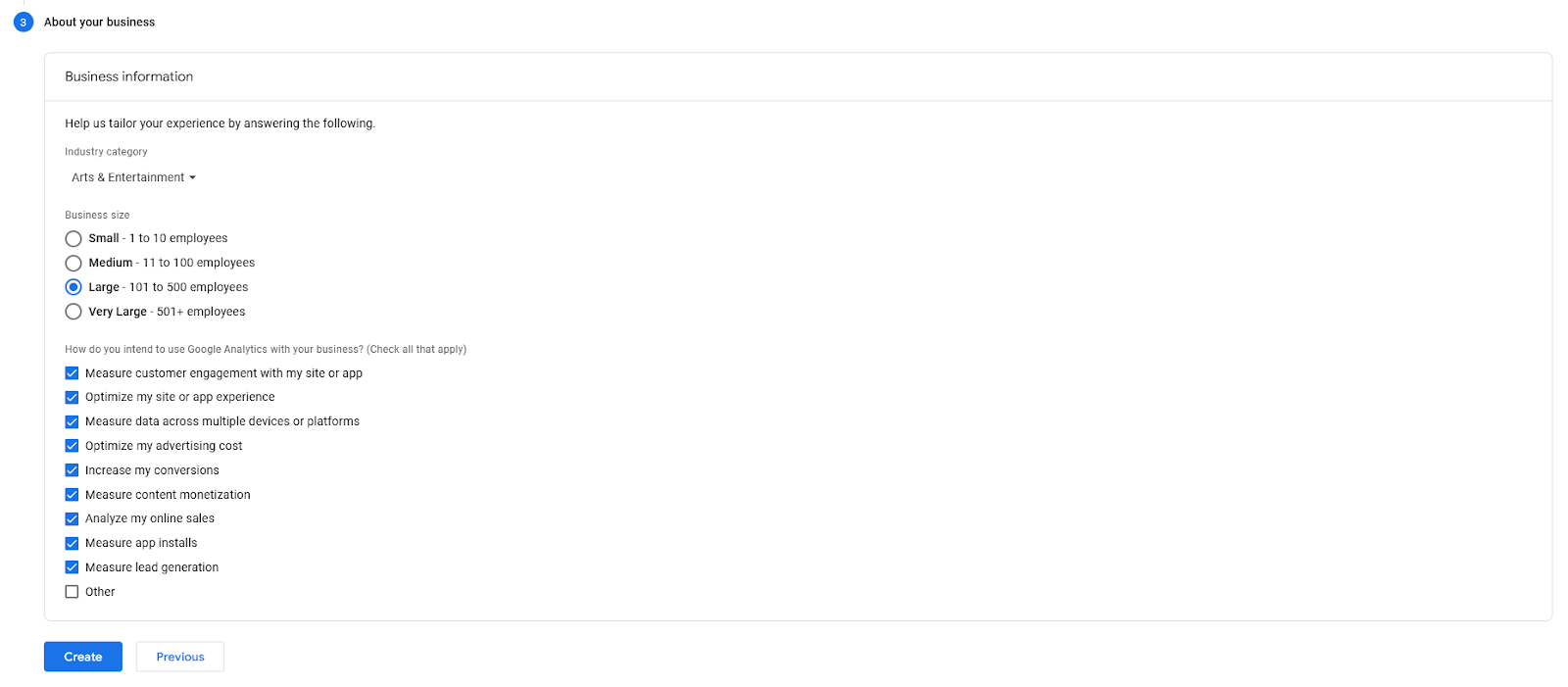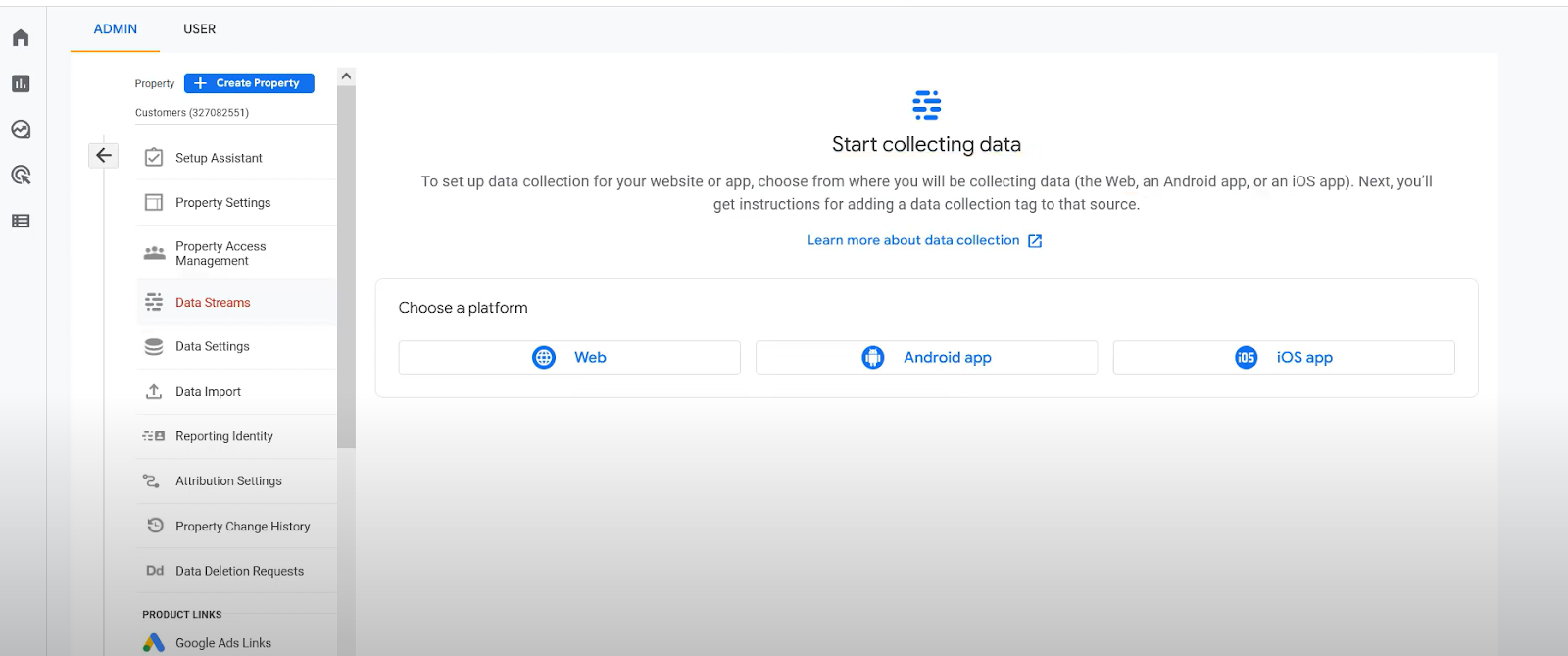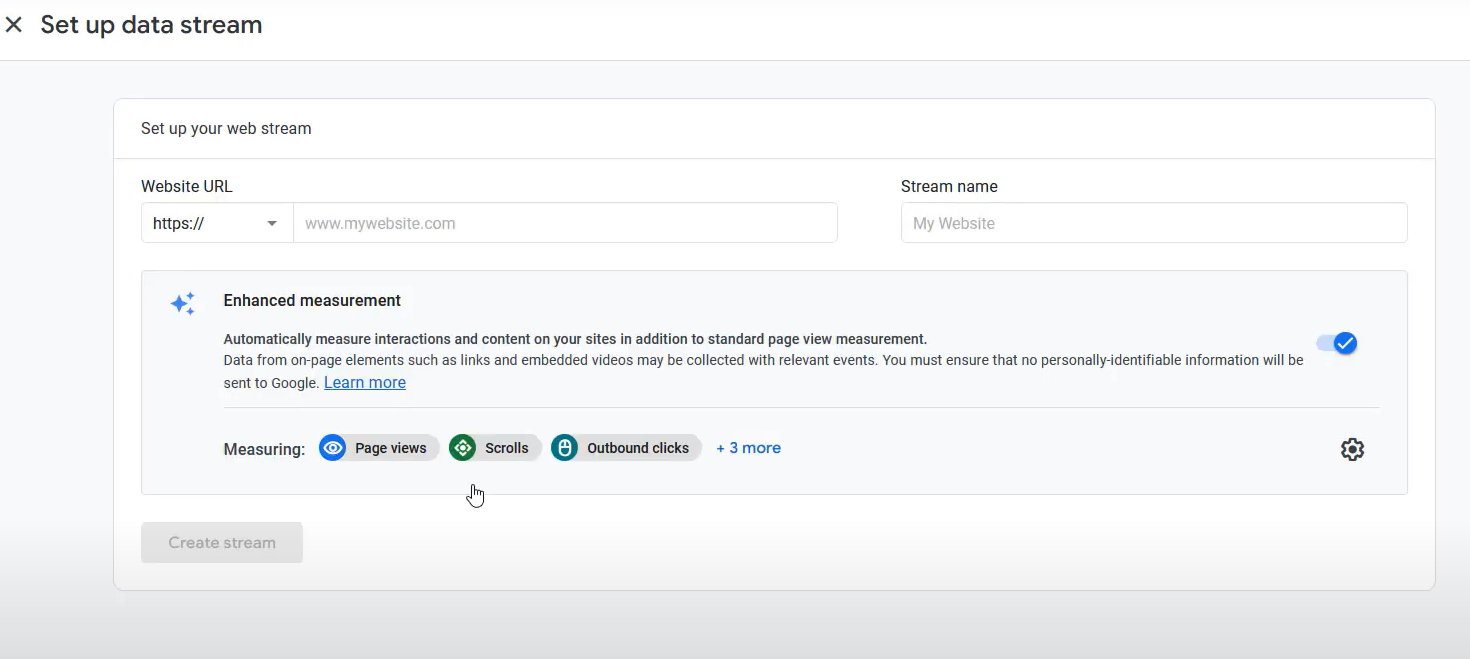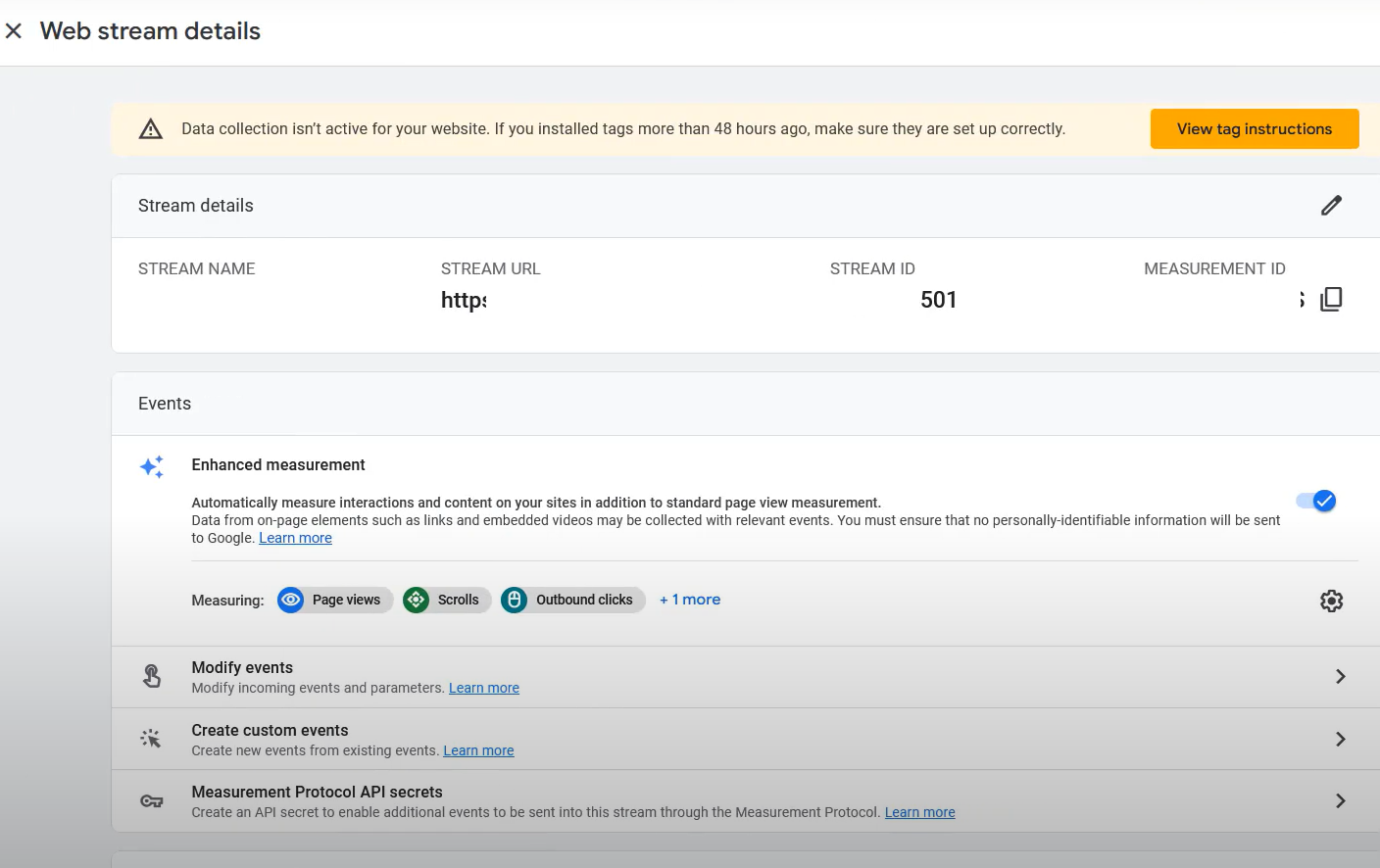Content marketing is an effective way to attract and retain customers. It does take time and resources, but it delivers more valuable traffic and builds your authority in the long run. And it’s finely targeted as well, allowing you to reach customers at every stage in their journey.
To get lucrative results from your content efforts, you need extensive knowledge of your consumers. Where are they looking for information, what kinds of searches are they doing, and what devices do they use? More data means greater knowledge of your customers, helping you make informed decisions that drive revenue and contribute to profits.
So where do you get all that data?
For the last decade most of us have been getting it from Universal Analytics (UA), but its looming demise means everyone will have to shift to Google Analytics 4 (GA4).
If you’ve already made the switch, you may have noticed that the interface is quite different from Universal Analytics. Don’t worry, GA4 actually makes analyzing your website data easier and more manageable than UA, once you get the hang of it.
In this article we’ll explore the key changes in GA4 that impact your marketing data, and to effectively use GA4 for content marketing success.
What Makes GA4 Better than Universal Analytics?
Google Analytics 4 showcases the next level of web analytics. Unlike Universal Analytics (formerly known simply as ‘Google Analytics’), GA4 provides automated insights and more accurate data.
GA4 is smarter than its predecessor, allowing you to track a user’s engagement with your content across multiple devices. This wasn’t possible in Universal Analytics, you’d have to download a different version of GA to consolidate separate datastreams coming from apps and websites.
GA4 also allows you to customize data, with a variety of useful and efficient views. Google uses an enhanced machine learning technology, which helps content marketers and creators not just collect but also predict new insights easily.
Another major change is that GA4 is built around events. In Universal Analytics, website activities are primarily tracked based on sessions and pageviews. With events-driven data, you can get the same data with further added metrics like engagement time and engaged session per user.
The best part is that GA4 adds a bundle of excellent default events upon configuration, so even if you’re not confident in using Google Tag Manager to create custom events you’ll still have useful data. With Universal Analytics, you had to create every event you wanted tracked.
You can further set events into anything from add to cart, product click, scrolls, pageview to video views, downloads, shares, sign-ups and more.
This new model also enables GA4 to track users’ behavior as they perform an event, rather than waiting for a user to enter a new page to calculate the metric from the page they just left. This aspect is risky, as there’s a potential to lose the data if the user decides to close the browser or leave the site.
Key Differences Between GA4 and UA
1. Mobile Device Tracking
With Universal Analytics, you had to use different versions of GA to see data on users coming from mobile apps vs. websites. GA4 tracks data from mobile (Android and iOS) and web apps and websites, and displays it all in one interface.
2. Data Model
Google Analytics draws data from multiple sources; to clearly view and analyze the data, it all has to be unified, so Google added events.
The addition of events enables you to track and measure particular user interactions, no matter what they’re using: the web or app. You also have the option to set a number of events, such as when a user clicks a link, loads a page, or completes a checkout.
3. Pathways
Pathways give you a clear view of the customer journey so that you can better understand how they interact with your site. This also shows how users navigate your website pages. You can easily see how people access your site, what page attracted a user, and where they went before they converted or exited your site.
With this data, you can then create a hypothesis that you can use to improve or change those steps and improve the user experience.
4. GA4 Reports and Explorations
Reports have always existed in Google Analytics. But with GA4, they’re easier to understand and it’s easier to create a custom report. Unlike Universal Analytics, GA4 comes configured with multiple reports that pull the data marketers are most often interested in seeing.
GA4 has a new analysis hub where you can further view data in a customizable way. There are seven “exploration” options that clearly explain what data will be shown and how.
Below is an example of a free form exploration, which allows you to pick and choose data sources.
You can fairly quickly and easily do an analysis in a format that suits your preference.
Using GA4 to Build Your Content Marketing Strategy
Now let’s talk about how to use the power of GA4 to drive content marketing results.
1. Define Your Goals
Producing content without a clear goal won’t do much for your website or your business. Simply publishing content and hoping it will earn traffic is not a strategy.
You must know the purpose of each piece of content you create, and how it ties to the bigger business picture. This means devising well-defined goals.
Some measurable content marketing goals to think about:
- Improve average engagement time or the average time your webpage was in a visitor’s focus
- Increase organic traffic
- Increase online conversions (sign-ups or sales)
- Increase brand awareness
- Increase backlinks
- Boost ROI
Once you’ve chosen a goal, you can create a content plan. Any piece of content found on your site should be rooted in your expertise and niche, intended to help a potential customer or client solve a problem. This should always be the basis for your topics.
For example, if you own an auto repair shop, focus on articles that are relevant and helpful to your customers, such as how to improve car performance, tips on car maintenance, or signs of specific problems.
Google’s Helpful Content update has guiding questions you can use to determine authority and focus, including:
- Is the content in any way connected to your site’s main purpose? Is it aligned with your brand?
- Will the content be written by someone who’s an expert in the field or has first-hand experience on the matter?
2. Analyze Your Audience
Understanding your audience goes beyond identifying their demographics. That kind of data is useful for targeting ads, but websites don’t work the same way. Website audiences are better defined by their pain points.
You can learn more about your readers by checking the comments they leave on your site, or go above and beyond by checking reviews and comments about your competitors. You can also learn about them through Google Analytics 4 data.
A feature in GA4 called User Metric lets you see the total number of users that visited and engaged with which content on your site. You can also see if they used a website or an app to access it, allowing you to optimize your content strategy based on data.
This helps you see if your existing content gives enough value to keep your visitors hooked. And you’ll see how readers interact with the content.
A metric you also need to keep tabs on is Views by Page. This metric shows you which of your pages have the highest traffic and views. Use this data to discover which content your audience finds the most interesting and useful, so you can attempt to recreate that success.
For example, if the highest-performing post on your car repair shop website is about auto maintenance, your users likely want to learn more about keeping their vehicles in good condition. They are likely also interested in other tips for saving money and preventing unexpected expenses.
The data from GA4 not only gives insight on what information tracks well with your users, but also provides you with ideas for future topics.
3. List Your Target Keywords
Keywords are important in content creation because they help your content reach its target audience. Choosing the right keywords also helps search engines understand what the page is about, so they can rank it properly.
Having the right keywords will help you publish better-targeted content or content that matches your target user’s search intent.
This is why keyword research for content marketing is important. Learning how to find keywords is a crucial part of the process. There are different ways to help you find keywords by yourself if you’re not thinking about using a content marketing agency.
- Use Google’s Keyword Planner: Even though this is made for Google’s paid ads, it can also be used for general keyword research. It’s a free tool and all you need to do is have a Google Ads account.
- Use a free or trial version of an SEO tool like SEMRush, Ahrefs, or Moz.
- Connect Google Search Console to GA4 and enjoy keyword data right in your analytics interface
Google Search Console isn’t a keyword research tool but it can be useful if you already have existing content on your site.
Once connected to GA4, you can easily check the top queries you’re ranking for and the page that’s ranking for that keyword.
You can then aim to write content that improves your ranking for keywords you already rank for, or content to start ranking for relevant queries that you aren’t matching.
Once you have done keyword research, it’s time to categorize your queries and then group them into categories according to search intent. Search intent describes why the user is looking for that keyword; it’s about pinpointing the purpose of the search.
Another way to find keywords is by using Google Trends. It can help you find topics that are trending at the moment, and to see how a keyword has changed in volume or popularity over time within your region.
4. Choose the Right Type of Content
Having a business blog is an extremely effective way to attract potential customers, however, blogs aren’t always best for each step of the funnel. Creating a variety of content types is ideal for different stages of conversion.
There’s long-form, evergreen content (content that will be relevant for years to come), which can build thought leadership. These can be guides or comprehensive articles that people can use as references. There are also case studies, ebooks, whitepapers, infographics, checklists, videos and templates.
You can use GA4 to figure out which type of content works best, and even the ideal length of content to produce.
For example, are your most viewed pages long listicles, short “how-to” posts, or comprehensive “what” articles?
To learn which content is performing well, go to the Pages and Screens report. Then, analyze reports for the most popular pages and the content that earned the deepest scrolls.
GA4 can also help you analyze video views, video play duration, and downloads. For example, if you have ebooks on your website, you can see how many downloads the file has by turning on PDF tracking.
Head to your admin dashboard, then choose Data Stream (found under Property).
Then, under enhanced measurement, click the gear icon. Activating this lets you gather data from links or videos on your site.
It’s plain to see how this feature is helpful for content marketers.
GA4 comes configured with several popular events to track actions on your website as users engage with your content, but you can also make your own. To create an event, go to Reports, then click Engagement, then Events.
5. Create Your Content Calendar
Content marketing is an ongoing process and as such, many factors are involved in its success. Research, strategy, content creation, monitoring, and optimization deliver more rewards as they’re done consistently and properly.
A content calendar will give you the ability to maximize your efforts, which is especially crucial for small business marketers who have other roles. Here’s a content calendar template you can use to get started.
Consistency is key. Once you find something that works for you, you should do it consistently. If a particular type of content is attracting your ideal visitors, then keep publishing content that offers the same value.
Similarly, publishing consistently on the same schedule will give your readers a reason to regularly come back to your website. More visitors mean more data to help you plan future content.
How to Set Up Google Analytics 4
If you haven’t yet set up GA4, Google continues to add features that make it easy to migrate your UA settings over.
- Log in to Google and head over to https://analytics.google.com/
- Click Start measuring.
- Fill in the account details. The Account name is usually the name of the company.
- Click next and create a property name. A property represents the name of the data that you want to collect. You can create multiple properties if you want.
Choose the time zone, and click next.
- Provide the necessary details. Select your industry category, the business size, and how you intend to use Google Analytics.
Click Create. A pop-up window will appear. Accept the terms so you can proceed.
Once you have created a property, you can start collecting data streams.
- Choose a data stream.
Data streams are resources where your data will be collected. You can choose from the web, Android app, or iOS app.
For this example, we’re choosing web.
A pop-up box will appear and you’ll be prompted to fill out the website URL and then the stream name.
Turn on the Enhanced measurement so you can measure metrics such as page views, scrolls, outbound links, site search, video engagement and file download. You can change this by clicking on the settings icon.
Once you’re done, click Create stream.
Now, if you click on your data streams, you can see that the GA4 property is now created.
You’ve successfully created a Google Analytics 4 account and activated a property.
Data-Driven Content Strategy Drives Results
On July 1, 2023, standard Universal Analytics will no longer track web traffic. You will need GA4 to continue to gain insights from your website data.
A new system is always daunting, but Google Analytics 4 is user-friendly, versatile, and customizable. And you do have a bit of time before UA ceases to exist, during which you can get used to the new analytics tool.
As we see stricter privacy laws and web browsers implement stronger privacy features, data collection becomes limited. UA has had problems with data accuracy and attribution. GA4 is designed to address these problems through granular data and flexible tracking.
With GA4, you’ll make better informed decisions when creating an effective content marketing strategy.


